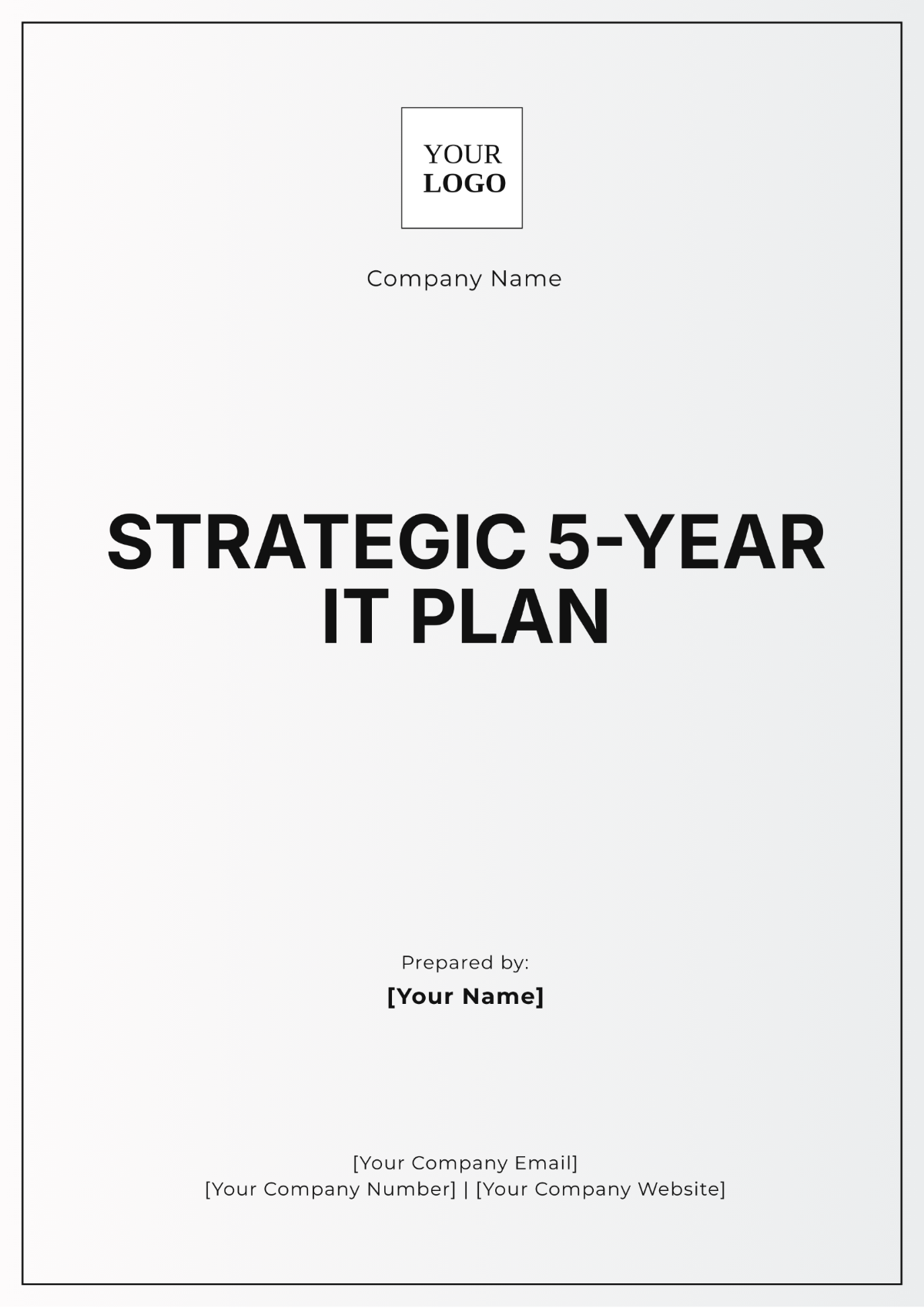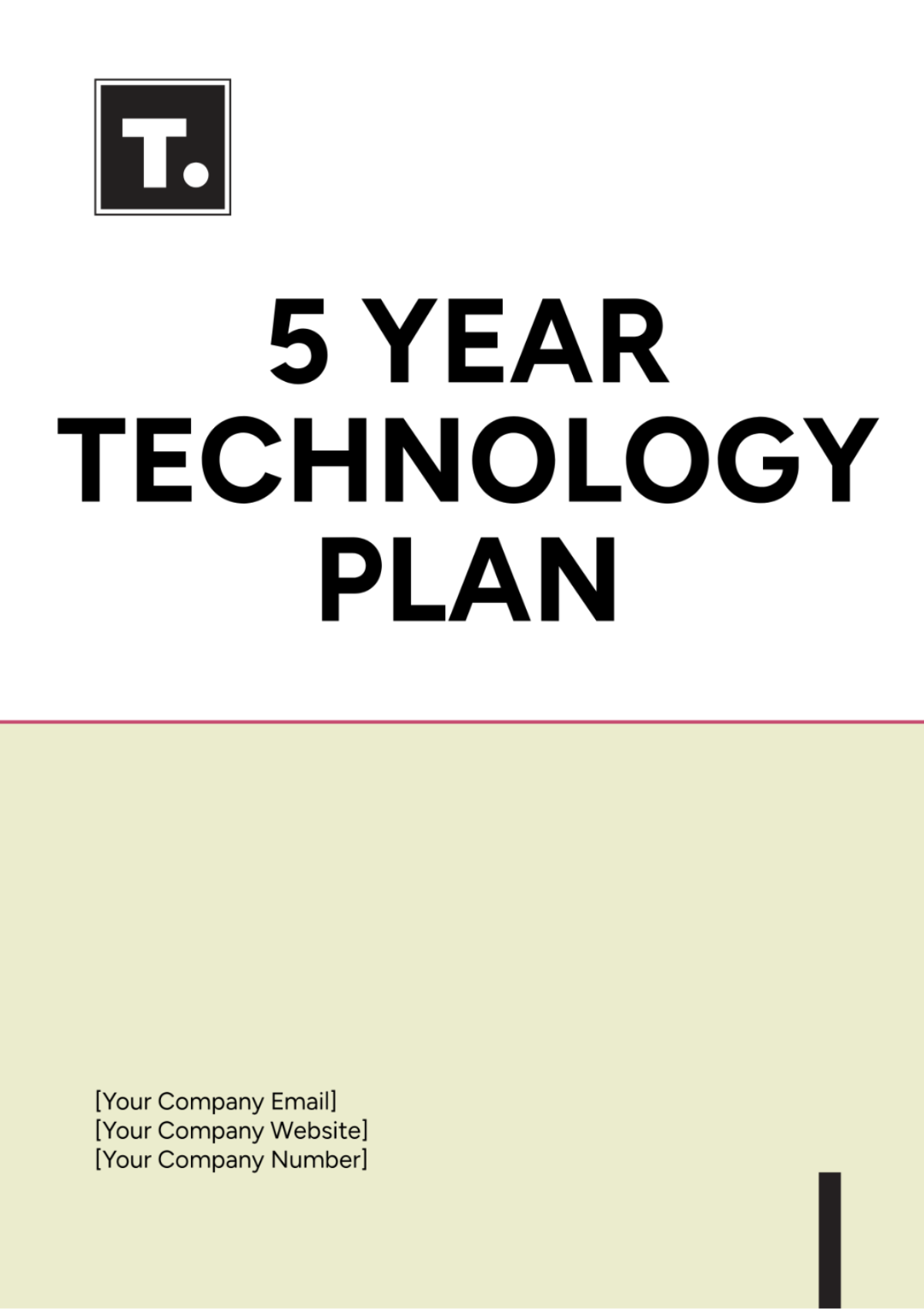5 Year Technology Plan
I. Executive Summary
[YOUR COMPANY NAME] aims to enhance its cybersecurity posture over the next five years to protect against evolving threats, ensure data integrity, and maintain customer trust. This plan outlines our strategic objectives, implementation roadmap, resource allocation, risk management, and performance metrics.
II. Current State Assessment
Existing Infrastructure: [YOUR COMPANY NAME] currently utilizes basic firewall and antivirus solutions for cybersecurity.
Vulnerabilities Identified: Recent security audits revealed weaknesses in employee awareness and endpoint protection.
Resource Availability: Limited budget and personnel allocated to cybersecurity efforts.
III. Future Vision
[YOUR COMPANY NAME] envisions a robust and adaptive cybersecurity framework that can effectively counter sophisticated threats, ensure compliance with regulatory requirements, and protect sensitive data.
IV. Goals and Objectives
Strengthen Network Security: Implement next-generation firewalls and intrusion prevention systems to safeguard network infrastructure.
Enhance Endpoint Protection: Deploy comprehensive endpoint security solutions across all devices to prevent malware infections and data breaches.
Improve Data Security: Utilize advanced encryption technologies and secure data storage solutions to protect sensitive information from unauthorized access.
Increase Employee Awareness: Conduct regular cybersecurity training and awareness programs for all employees to mitigate human error risks.
Ensure Regulatory Compliance: Achieve and maintain compliance with relevant industry standards and regulations, such as GDPR and PCI DSS.
V. Implementation Roadmap
Year | Goals | Initiatives |
|---|---|---|
1 | Conduct a comprehensive cybersecurity audit |
|
2 | Deploy endpoint protection solutions |
|
3 | Introduce advanced threat detection |
|
4 | Integrate AI and ML into threat detection |
|
5 | Finalize compliance |
|
VI. Resource Allocation
Resource | Budget | Personnel | Technology |
|---|---|---|---|
Year 1 | $200,000 | Hire 2 analysts | Firewall upgrade |
Year 2 | $250,000 | Training | Encryption |
Year 3 | $300,000 | Hire SOC team | SOC infrastructure |
Year 4 | $350,000 | AI training | AI software |
Year 5 | $400,000 | - | Optimization |
Budget Requirements: Yearly budget allocations for software, hardware, personnel, and training.
Personnel Needs: Hiring additional cybersecurity staff and providing ongoing training for existing employees.
Technology Investments: Investment in advanced cybersecurity solutions, including software licenses and hardware upgrades.
VII. Risk Management
A. Risk Identification
Data Breaches: Potential unauthorized access to sensitive information resulting in data exposure.
Ransomware Attacks: Threats of malicious software encrypting data for ransom, disrupting operations.
Insider Threats: Risks of internal employees or contractors intentionally or unintentionally causing harm to systems or data.
Phishing and Social Engineering: Attempts to deceive employees into divulging sensitive information or performing unauthorized actions.
Third-party Risks: Vulnerabilities stemming from reliance on external vendors or partners for services or data storage.
Compliance Violations: Risks of failing to comply with industry regulations and standards, leading to legal and financial consequences.
B. Mitigation Strategies
Data Breaches: Implement encryption protocols for sensitive data, conduct regular vulnerability assessments, and enforce strict access controls.
Ransomware Attacks: Deploy advanced malware detection software, conduct regular backups, and educate employees on phishing awareness.
Insider Threats: Implement user behavior analytics, enforce least privilege access controls, and conduct periodic employee security training.
Phishing and Social Engineering: Conduct regular phishing simulations, and provide ongoing employee training on identifying and reporting suspicious activities.
Third-party Risks: Perform due diligence on third-party vendors, establish clear contractual obligations for security, and conduct regular security audits.
Compliance Violations: Establish compliance monitoring procedures, conduct regular audits, and ensure staff training on regulatory requirements.
C. Incident Response Plan
Detection: Establish continuous monitoring systems for early threat detection.
Response: Define roles and responsibilities for incident response team members, establish communication channels, and prioritize incident response based on severity.
Containment: Isolate affected systems or networks to prevent further damage or data loss.
Eradication: Remove malware, restore affected systems from backups, and patch vulnerabilities to prevent future incidents.
Recovery: Restore normal operations, communicate with stakeholders, and conduct post-incident analysis to identify lessons learned.
VIII. Performance Metrics
A. Key Performance Indicators (KPIs)
Incident Detection Rate: Percentage of cybersecurity incidents detected within a defined timeframe.
Response Time: Average time taken to respond to and mitigate cybersecurity incidents.
Employee Training Completion Rate: Percentage of employees completing cybersecurity training and awareness programs.
Regulatory Compliance Score: Assessment of compliance with relevant industry regulations and standards.
Incident Resolution Time: Average time taken to resolve cybersecurity incidents from detection to resolution.
System Downtime: Total time systems are offline due to cybersecurity incidents or maintenance.
B. Regular Reviews
Quarterly reviews to assess progress toward cybersecurity goals, identify emerging threats and adjust strategies as needed.
Review incident response procedures and update based on lessons learned from past incidents.
Conduct annual audits to evaluate the effectiveness of cybersecurity controls and compliance with regulatory requirements.
C. Reporting
Provide regular reports to senior management and the board of directors on cybersecurity initiatives, including progress updates, KPIs, and recommendations for improvement.
Communicate incident response activities and outcomes to relevant stakeholders, including actions taken, lessons learned, and plans for prevention in the future.
IX. Conclusion
This 5 Year Technology Plan for Cybersecurity Enhancements provides [YOUR COMPANY NAME] with a strategic roadmap to bolster its cybersecurity defenses, protect critical assets, and maintain a secure environment for its operations and customers. By adhering to this plan, we will achieve a resilient and adaptive cybersecurity posture, ensuring long-term success and security.

































